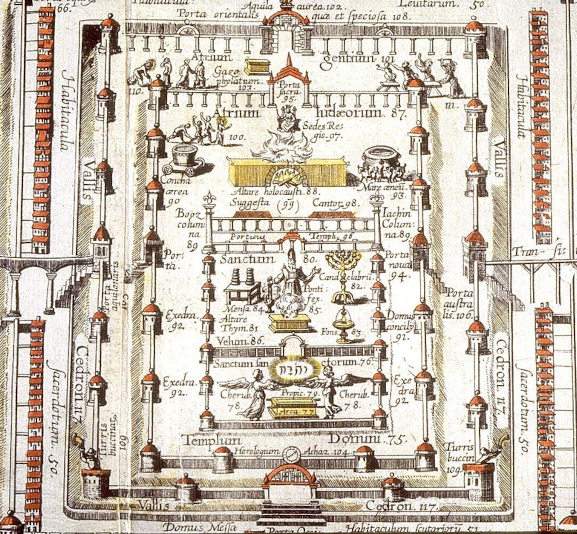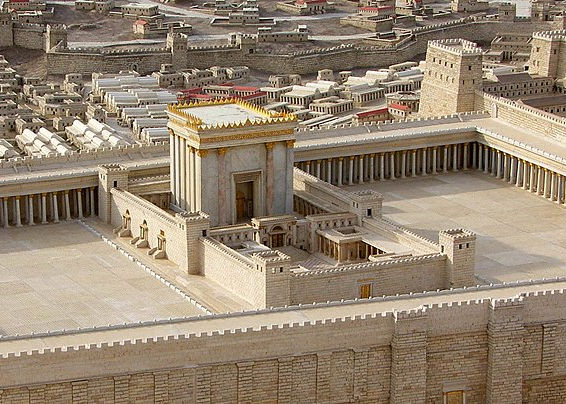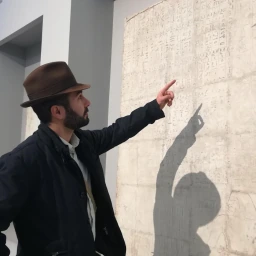An engraving found in a wall of a Romanesque cloister, on an ancient plaster or in the pavement of a square, what can it tell us? Certainly much more than appearances suggest. It is not just a worn graffiti or a sign left absent-mindedly along the road. There is an arcane and fascinating world that stone can reveal. Every engraving is there for a reason, perhaps unknown to us, but not to its author. Stone is by nature incorruptible: carving its surface indicated, since ancient times and then in the Middle Ages, a desire to make the message equally eternal and manifest.

Some engravings are well-known, while others reveal themselves as mysterious signifiers. It is not always easy to tell whether they are symbols, implying a recognisable meaning for a group of individuals, or whether they only respond to a functional or even playful need. This is the case of the so-called Medieval tabulae lusoriae, engravings that reproduce the boards of certain games known since antiquity: the Merels Board, the Tic-tac-toe and the Alquerque1. These graffiti are often found along spiritual pilgrimage routes and, even more surprisingly, in places of worship2. So, how to reconcile the playful aspect with the sacred? All the evidence suggests that the board of a game, as the Merels Board, has over time taken on the significance of a symbolism linked to the sphere of the divine.

The sacred and the game
Although today the distinction between the sacred and the profane seems clear, especially in relation to defined spaces and times for the celebration of religious ceremonies, this was not so in ancient times. Instead, play was sometimes an intrinsic component of ritual3. Indeed, it followed the same principles of codification and reiteration – with well-established rules – and could even be attributed a metaphysical efficacy. Thus, the Panhellenic Games in Greece, since the 8th century B.C., had a sacred character and were officiated for the divinities; in Rome the dice games were forbidden since 204 B.C.4, except during the Saturnalia5.
Other examples could be cited, but the aspect to be emphasised is that the game, unconsciously or manifestly, represented a reflection of something beyond the sphere of the human. Victory or defeat could not be completely predicted: outcomes were guided by divinity, by the goddess Fortune, just like the events of life. This is the meaning of the sacred, which in its Indo-European linguistic origin means “separate”, “other” than what man can dominate.
The game of the Nine men’s morris
The use of tabulae lusoriae as a playful pastime already existed in ancient Rome. We have a large number of them at the remains of the Basilica Iulia in the city’s Forum. On the steps of the building were engraved three concentric squares connected by lateral axes. This was the board of the Italian filetto, whose geometry therefore reproduces a Merels Board. The game required the use of nine white pawns for one player and as many black ones for the other. The aim was to place three pawns in a row, of the same colour, against the opponent.
At the same time, however, we find the Merels Board in religious contexts: at the Sanctuary of Minerva in Breno, an engraved stone block with its board and some pawns was found6. The artefact, now kept at the National Archaeological Museum of the Valle Camonica in Cividate Camuno, is only a fragment and shows a certain extemporaneity in its rough workmanship. It does not have the value of a symbol yet, but demonstrates how the game was conceived within such an important sacred area.
The origin of the symbol in the Middle Ages
The game of the Nine men’s morris remained unchanged over the centuries, mainly due to its simplicity. It was certainly very popular in the Middle Ages. We find the same schemes cited in Arabic manuscripts, such as in the Book of Songs (Kitab al-Aghani) by Abū l-Faraj al-Iṣfahānī from the 10th century, and Christian ones, of which the Libro de los juegos commissioned by Alfonso X of Castile in 1284 is quoted, a symptom of inter-cultural permeability. It is not difficult to suppose that this syncretic process gained strength from the interactions between West and East during the crusades. Most likely, the knightly orders of the time, such as the Templars, contributed to its spread.
Religious feeling also involved games with tabulae lusoriae, which in a certain sense became an eschatological allegory. The struggle between good and evil, black and white, was represented on the Merels Board as on the chessboard. This is the origin of the symbol.

The Merels Board as a sacred symbol
A symbol is such only if used in a context that makes it effective, in a place where its meaning is shared and comprehensible. Thus, the Merels Board is so frequently found in places of worship that its message can only be understood in relation to the sacred7. We find it at Valvisciolo Abbey in Sermoneta, in Fossanova, in the complex of Sette Chiese in Bologna, in Genoa cathedral of St Lawrence, in Fidenza Cathedral, on a slab at the Sanctuary of Monte Sant’Angelo on Mount Gargano and so on.
There are other clues that suggest how the Merels Board bypassed the simple playful use. First, many specimens are placed in Cistercian churches and abbeys, but Saint Bernard of Clairvaux had been clear about this, “detestantur aleas et scaccos” he had stated in De laude novae militiae8. Moreover, some of the patterns are drawn on vertical walls, certainly an uncomfortable location for the use of a game board. The Merels Board survived the moralization of games, and this was only possible as a symbol, only with new sacred meanings ascribed to it. As with so many other games, customs, festivities, it certainly suffered a reinterpretation in a Christian sense.

The Merels Board, microcosm and macrocosm
We can perceive in the search for the sacred the desire to trace a superior order that can regulate the world, that provides an answer to the prevailing chaos. In the theological vision of the Christian Middle Ages, God is the creator of the cosmos, He is the one who gives order to matter9. On a symbolic level, such perfection could be expressed through sacred geometry. The geometric schemes, drawn in a manner that could be called ritual, had defined proportions and imitated the harmony of creation. Thus, the analogy between the microcosm and the macrocosm was represented in the Merels Board.
In particular, the figure of the square, with its four sides, recalled the constituent elements of the universe (water, fire, earth, air), the cardinal points and the seasons. In other words, it summarised the fundamental principles of creation: matter, space and time. This explains why the Merels Board was often engraved inside abbey cloisters, whose square-plan architecture was the result of the same symbolism. Again, four are the beings that drove the Merkavah, the chariot of fire led by the Spirit of God10, a prophetic representation of the Evangelists and the Word of God. Implicit in the scheme of the Merels Board was the number three, a reference to the Trinity. The intersection of the lateral axes, moreover, could only be a figure of the Cross, axis mundi ideally connecting the cosmos to God, earth to heaven.
The meeting place
At the same time the Merels Board, as a representation of the cosmos, was also the place of encounter with the sacred, the metaphysical space in which the divine was manifested. Among the people of Israel, there was a building designated for this purpose: the Solomon’s Temple in Jerusalem housed the Ark of the Covenant in the Debir, where the presence of Yahweh, the Shekhinah, was realised. It is interesting to read the description of the Temple in the Second Book of Chronicles:
[Solomon] “He made the court of the priests and the great courtyard and the gates of the courtyard; the gates he overlaid with bronze”.
2, Book of Chronicles 4,9
The First Book of Kings also affirms that Solomon:
“The inner court was walled off by means of three courses of hewn stones and one course of cedar beams”.
1, Book of Kings 6,36

Biblical sources tell that around the building there were two courtyards enclosed by walls; thus, an architectural Merels Board. Every church in Christianity could only refer, at least in symbolism, to Solomon’s Temple, the sacred centre that had been God’s dwelling place. The Sistine Chapel in Rome, for example, was built according to the measurements of the building as described in the Bible. The Merels Board, in its symbolic meaning of a cosmic sacred space, was perhaps a representation of the Solomonic Temple.

The Merels Board and the New Jerusalem
Similarly, the New Jerusalem, of which the Christian templum was an image on earth, is also described by Saint John in the Book of Revelation like a Merels Board:
“Behold, God’s dwelling is with the human race. He will dwell with them and they will be his people and God himself will always be with them (as their God)”.
“It had a massive, high wall, with twelve gates where twelve angels were stationed and on which names were inscribed, (the names) of the twelve tribes of the Israelites. There were three gates facing east, three north, three south, and three west. The wall of the city had twelve courses of stones as its foundation, on which were inscribed the twelve names of the twelve apostles of the Lamb. The one who spoke to me held a gold measuring rod to measure the city, its gates, and its wall. The city was square, its length the same as (also) its width. He measured the city with the rod and found it fifteen hundred miles in length and width and height”.
Book of Revelation, 21,3;21,12-16
This ambivalence of the Merels Board, expression of a place both earthly and heavenly, is explained through the connection between the Christian temple, which hosts the pilgrim church on earth, and the New Jerusalem, which will house the faithful at the end of time. In the biblical chapter, we note the recurrence of the number twelve. It indicates the totality of things, then all humanity: it is the whole cosmos that has to be reunited with God. There will no longer be a need for mankind to have a place deputed for the encounter with the transcendent, like Solomon’s Temple in Jerusalem, since in heaven the divine presence is for eternity. As described by Saint John, in the Merels Board the concentric squares orient their sides in the direction of each cardinal point, twelve in total.
The symbolic meaning of the Merels Board thus marked the sacralisation of a place. Like a sigillum impressed in stone, it invoked the divine presence, prefigured the spiritual Jerusalem in the material temple on earth.
Samuele Corrente Naso
Notes
- S. Centonze, La Triplice Cinta, il Tris e l’Alquerque da tabulae lusoriae a simboli di pellegrinaggio – Schede di Censimento, in “MATHERA”, anno IV n. 12, del 21 giugno 2020, Antros, Matera. ↩︎
- G. Barrella, La Triplice Cinta nella Daunia, V convegno nazionale – Mergozzo Centro Studi Triplice Cinta, 17 – 18 ottobre 2020. Il relatore riporta che il 72% delle tabulae lusoriae rinvenute si trovino in chiese, eremi, grotte, santuari e abbazie. ↩︎
- M. Riemschneider, Riti e giochi nel mondo antico, Convivio, 1991. ↩︎
- G. Rotondi, Leges publicae populi Romani. Elenco cronologico con una introduzione sull’attività legislativa dei comizi romani, in Enciclopedia Giuridica Italiana, Milano, Società editrice libraria, 1912. ↩︎
- Luciano di Samosata, Saturnalia, II secolo d.C. ↩︎
- S. Solano, Una tabula lusoria e pedine da gioco dal santuario di Minerva a Breno (BS), in C. Lambrugo, F. Slavazzi, A.M. Fedeli, I materiali della Collezione Archeologica“Giulio Sambon” di Milano, All’Insegna del Giglio s.a.s., Firenze 2015. ↩︎
- M. Uberti, G. Coluzzi, I luoghi delle Triplici Cinte in Italia, Eremon Edizioni, 2008. ↩︎
- Bernard of Clairvaux, De laude novae militiae ad Milites Templi, IV, 7. ↩︎
- Thomas Aquinas, Summa Theologiae, 1265-1273. ↩︎
- Book of Ezekiel 3. ↩︎


